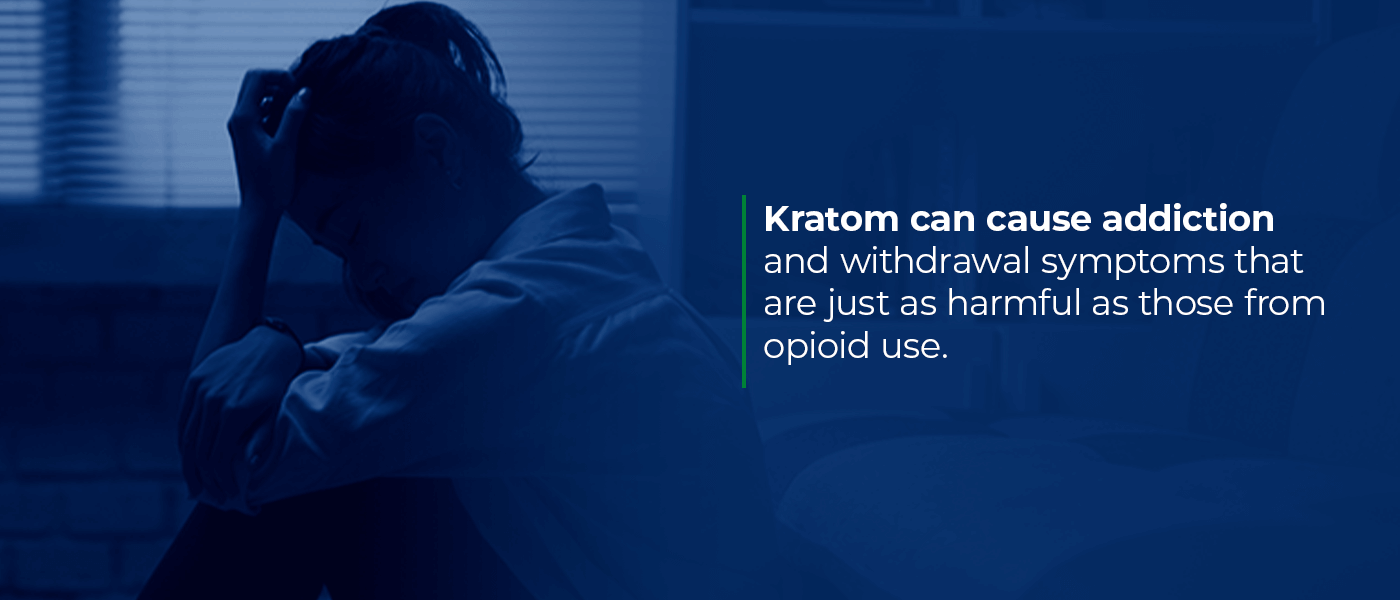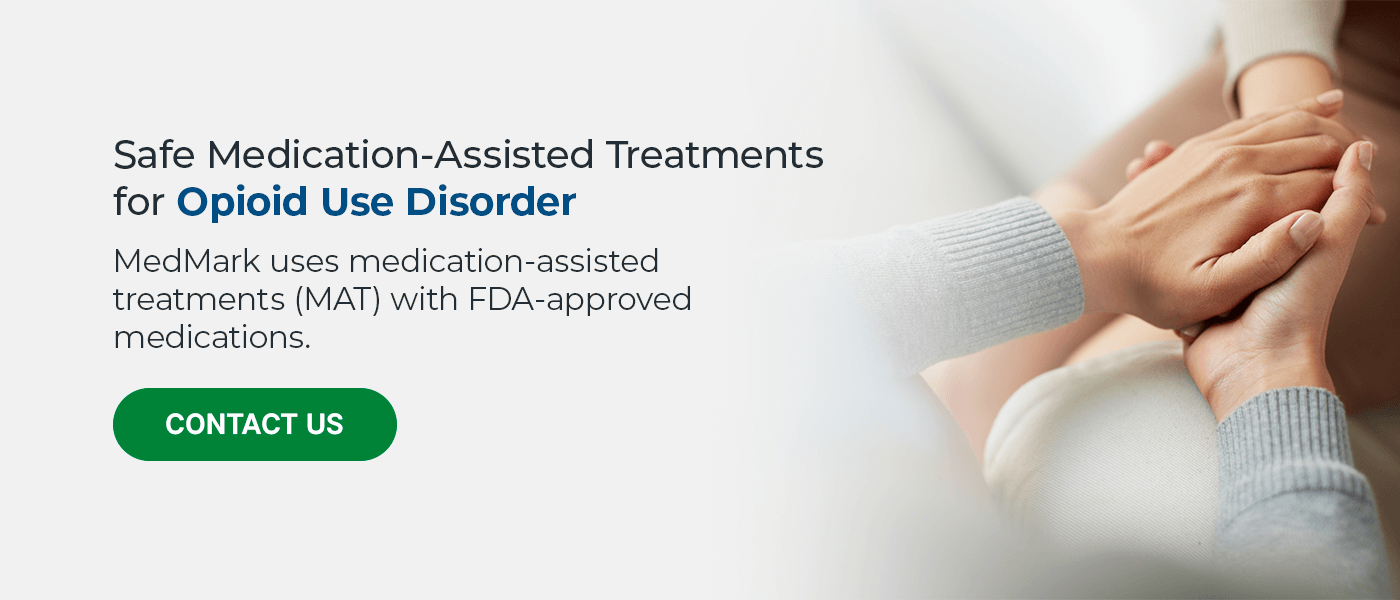Kratom, derived from the leaves of a Southeast Asian tree, is a relatively new drug to many individuals. Despite being legal, it remains popular mainly within underground communities and is available in both leaf and powder forms. Although some believe it can alleviate opioid withdrawal symptoms, there is no scientific evidence that supports this claim, and its effectiveness is yet to be established.
The substance’s effects are dose-dependent, making it unpredictable, with stimulant effects resulting in rapid bursts of energy, increased heart rate, and restlessness. Alternately, opioid-like effects can cause lethargy, sluggishness, yet induce feelings of contentment and euphoria. Some studies suggest that frequent Kratom use can lead to addiction.
Why Kratom Is Not a Safe Option to Treat Opioid Use Disorder
Despite claims by many that Kratom can alleviate the side-effects of opioid withdrawal, there is no scientific evidence to support this claim, and its effectiveness remains unproven. Consequently, healthcare providers do not use Kratom to treat opioid addiction, opting instead for FDA-approved medications that are safe for treating opioid use disorder withdrawal symptoms. At MedMark, we do not offer Kratom to patients because of the dangerous effects it can have on the body.
Poison control centers have reported an increase in calls due to Kratom misuse. Kratom’s effects are not yet widely understood, making it a potentially dangerous drug. Kratom use can result in addiction and withdrawal symptoms that are just as dangerous as those caused by opioid use.
While overdose is rare, it can become more dangerous when combined with alcohol or other drugs. Despite its “legal” status, there are still potential dangers of Kratom that need to be addressed in regards to long-term use.

Effects of Kratom
The effects of Kratom on individuals are primarily determined by the dosage consumed. When ingested, the effects occurs within ten minutes and lasts about 90 minutes. Individuals often report that small doses of Kratom produce a stimulating effect, promoting alertness and sociability. However, larger doses have the opposite effect, causing individuals to feel sluggish and weighed down.
When taken regularly, Kratom can have many long-term effects that can be unpleasant and potentially life-threatening. In 2019, the National Poison Data System reported 11 deaths between 2011 and 2017 that involved Kratom exposure.
Loss of Appetite
Taking Kratom regularly can cause significant weight-loss and even lead to eating disorders such as Anorexia Nervosa. With highly restricted calorie intake, the body can experience severe and dangerous weight loss that can negatively affect internal organs. Anorexia can potentially lead to death due to starvation and organ failure and needs medical attention to rehabilitate.
Constipation
Frequent and prolonged Kratom use can slow down .the bowel and digestive system can begin to slow down. While this isn’t a serious condition, it can become highly uncomfortable to have infrequent bowel movements that are difficult to pass. In serious cases, this could cause colon issues or even ruptures if measures aren’t taken to alleviate the situation.
Irritation
Kratom can trigger an inflammatory response in the body, causing flushing of the skin in the cheek or facial region, giving it a reddish-purple appearance. In addition, individuals may experience bouts of nausea, sweating, and frequent itching. These effects usually occur soon after ingestion of the substance and can persist for hours, causing considerable discomfort. For some people, such irritation can lead to insomnia or disturbed sleep.
Liver and Kidney Damage
Using high doses of Kratom over a long period of time can harm the liver and kidney. Signs of this damage can include very dark urine and yellowing of skin. When the liver is compromised, the kidneys take on the extra task of filtering toxins from the body. They can become overworked, which can lead to kidney failure among people with liver damage.
Negative Interactions
Mixing Kratom with other drugs can cause potentially hazardous side-effects. Mixing this drug with psychoactive substances creates a negative drug interaction that can lead to potential seizures. When taken with opioids, each drug may intensify the effects of the other, causing a potentially life-threatening overdose. From 2010 and 2018, there was a significant increase in calls to US poison control centers and some people also died from overdosing.
Accidental Overdose
People who already have a high tolerance for opioids who take Kratom run the risk of overdose because they are not able to dose Kratom properly. Due to its leaf nature, those who buy powdered Kratom have no way of verifying whether the substance has been laced with other drugs to exaggerate effects.
Addiction
Just like any substance, people can become addicted to the effects of Kratom. This is probably the most dangerous long-term effect of this drug, as a physical dependence can occur with time. As with all dependence, people who stop using Kratom will experience uncomfortable withdrawals that include aches, pains, nausea, vomiting, diarrhea, aggression, insomnia and other symptoms. Tremors, delusions and other more serious issues have also been reported.
Treatment for Kratom Misuse or Addiction
Websites selling Kratom are making false claims about its ability to help with opioid addiction, but there is no scientific evidence to support these claims. This makes Kratom a dangerous substance to use. People who have used Kratom to deal with their opioid addiction have instead become addicted to Kratom. Kratom should not be used as a substitute for proper drug treatment, especially for opioids.
Some people become addicted to Kratom, whether they started using it to help with opioid addiction or not. Since there isn’t much researched information on Kratom, this can be a scary experience. While the DEA and FDA have not yet taken official stances on Kratom, people are seeking treatment for Kratom addiction. The treatment process is similar to other drug treatments and is supervised by a medical professional.
Safe Medication-Assisted Treatments for Opioid Use Disorder
Even though some claim that professionals can use Kratom to treat withdrawal symptoms of opioid use disorder, there is not enough evidence to support this claim. Kratom carries negative, addictive side effects and risks. Instead, MedMark uses medication-assisted treatments (MAT) with FDA-approved medications such as methadone, buprenorphine and buprenorphine with naloxone.
For more than 50 years, Methadone has been utilized to treat opioid use disorder, proving to be effective when paired with additional supportive treatments such as substance use counseling. This medication is a full agonist opioid that can alleviate withdrawal symptoms during treatment. By activating the receptors in the brain, it can satisfy the body’s need for opioids, without the risks of misusing opioids. Methadone helps decrease cravings and the harmful physical side effects of withdrawal, making relapse less likely for patients.
Buprenorphine and buprenorphine with naloxone are also used to treat opioid use disorder. The FDA approved these medications in 2002, and like methadone, they work well when combined with other supportive treatments. Buprenorphine is a partial agonist that activates the brain’s opioid receptors to a lower extent than methadone. It reduces cravings and withdrawal symptoms while it blocks other opioids in the brain and limits the euphoric or “high” feeling that people can get.
If you or a loved one is living with opioid use disorder, it is essential to seek safe treatment options. Medication-assisted treatment programs will help patients with safe, FDA-approved medications.
Contact MedMark to learn more about our medication-assisted treatment options and how we can help patients safely achieve recovery from opioid use disorder.


